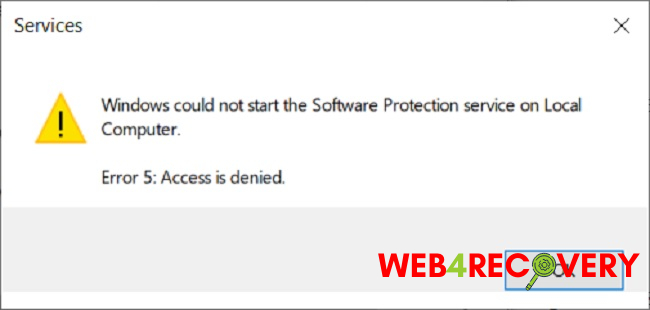Microsoft’s Software Protection Platform Service (SPPSVC.exe) is a crucial component of Windows that verifies the legitimacy of your software.
However, sometimes it can cause high CPU usage, impacting your system’s performance.
This article will discuss the causes of high CPU usage by SPPSVC.exe, methods to fix it, and provide insights into related issues such as rearming, stopping, and failed startups of the service on Windows 7 and Windows 10.

Understanding Software Protection Platform Service
The Software Protection Platform Service (SPPSVC.exe) is part of Microsoft’s digital rights management policy.
Its primary function is to check the authenticity of Microsoft software and protect against unauthorized use. However, some users have reported that SPPSVC.exe sometimes uses a high amount of CPU resources, which can slow down the computer.
Causes of High CPU Usage
High CPU usage can occur due to various reasons, such as outdated system files, software conflicts, or even malware disguised as the SPPSVC.exe process. Determining the exact cause can be tricky, but you can take several steps to address and resolve the issue.
How to Fix High CPU Usage
- Update System Files: Check for Windows updates and install them. Outdated system files can cause services like SPPSVC.exe to behave abnormally.
- Scan for Malware: Perform a thorough scan of your system with a reputable antivirus software. A malware disguised as SPPSVC.exe could be causing high CPU usage.
- Disable and Enable SPPSVC: Temporarily disabling the Software Protection Platform Service can also help. However, remember to enable it after a short time, as it is an essential service for your Windows.
Understanding ‘The Service Has Been Rearmed’
The message “the service has been rearmed” typically appears when the Software Protection Platform Service is reset. This process is often necessary to reset the licensing status of your Windows and Microsoft software, and usually, it does not cause high CPU usage.
Addressing ‘SPPSVC Keeps Stopping’ and ‘Failed to Start’
If you’re encountering problems with SPPSVC continuously stopping or failing to start, try the following:
- Check for Windows Updates: As with high CPU usage, keeping your system up-to-date can resolve many issues.
- Verify Service Settings: Make sure that the Software Protection Platform Service is set to ‘Automatic’ in the Services menu. If it’s set to ‘Manual’ or ‘Disabled’, it might stop running or fail to start.
‘Access Denied’ Issue
If you’re getting an “access denied” message while trying to modify the Software Protection Platform Service settings, it might be due to insufficient user privileges. Make sure you’re logged in as an administrator before trying to modify these settings.
‘Successfully Scheduled Software Protection Service’
If you see the message “successfully scheduled Software Protection service for re-start,” it means Windows has scheduled the service to restart at a specific time. This action is usually part of routine maintenance and shouldn’t cause concern.
‘The Software Protection Service Has Completed Licensing Status Check’
This message simply indicates that the Software Protection Platform Service has finished checking the licensing status of your software. It’s part of the service’s regular operation and doesn’t usually contribute to high CPU usage.
Conclusion
The Software Protection Platform Service plays a crucial role in maintaining the integrity of your Microsoft software.
While it can sometimes cause high CPU usage, the solutions provided here can help manage and resolve the issue. Ensuring your system stays up-to-date and protecting it from malware are key to maintaining the smooth functioning of services like SPPSVC.

















